Height rank
Poly International Plaza – Dawangjing
Beijing
-
Metrics
You must be a CTBUH Member to view this resource.
Official Name
Poly International Plaza – Dawangjing
Other Names
Poly Dawangjing Plaza Tower 1, Poly Dawangjing Plaza Tower 1, Poly Dawangjing, Dawangjing 636
Name of Complex
Type
Building
Status
Completed, 2016
Country
City
Postal Code
100096
Function
A mixed-use tall building contains two or more functions (or uses), where each of the functions occupy a significant proportion of the tower's total space. Support areas such as car parks and mechanical plant space do not constitute mixed-use functions. Functions are denoted on CTBUH "Tallest Building" lists in descending order, e.g., "hotel/office" indicates hotel function above office function.
office
Structural Material
Both the main vertical/lateral structural elements and the floor spanning systems are constructed from steel. Note that a building of steel construction with a floor system of concrete planks or concrete slab on top of steel beams is still considered a “steel” structure as the concrete elements are not acting as the primary structure.
Reinforced Concrete
Both the main vertical/lateral structural elements and the floor spanning systems are constructed from concrete which has been cast in place and utilizes steel reinforcement bars.
Precast Concrete
Both the main vertical/lateral structural elements and the floor spanning system are constructed from steel reinforced concrete which has been precast as individual components and assembled together on-site.
Mixed-Structure
Utilizes distinct systems (e.g. steel, concrete, timber), one on top of the other. For example, a steel/concrete indicates a steel structural system located on top of a concrete structural system, with the opposite true of concrete/steel.
Composite
A combination of materials (e.g. steel, concrete, timber) are used together in the main structural elements. Examples include buildings which utilize: steel columns with a floor system of reinforced concrete beams; a steel frame system with a concrete core; concrete-encased steel columns; concrete-filled steel tubes; etc. Where known, the CTBUH database breaks out the materials used in a composite building’s core, columns, and floor spanning separately.
composite
Energy Label
Pre-certified as LEED Silver under the LEED v3 Core and Shell
Height
161.2 m / 529 ft
Floors Above Ground
31
Floors Below Ground
3
# of Parking Spaces
815
# of Elevators
20
Tower GFA
61,223 m² / 658,999 ft²
-
By function
You must be a CTBUH Member to view this resource.
-
By material
You must be a CTBUH Member to view this resource.
Proposed
Construction Start
Completed
Architect
Usually involved in the front end design, with a "typical" condition being that of a leadership role through either Schematic Design or Design Development, and then a monitoring role through the CD and CA phases.
Usually takes on the balance of the architectural effort not executed by the "Design Architect," typically responsible for the construction documents, conforming to local codes, etc. May often be referred to as "Executive," "Associate," or "Local" Architect, however, for consistency CTBUH uses the term "Architect of Record" exclusively.
Structural Engineer
The Engineer of Record takes the balance of the engineering effort not executed by the “Design Engineer,” typically responsible for construction documents, conforming to local codes, etc.
MEP Engineer
The Design Engineer is usually involved in the front end design, typically taking the leadership role in the Schematic Design and Design Development, and then a monitoring role through the CD and CA phases.
Other Consultant
Other Consultant refers to other organizations which provided significant consultation services for a building project (e.g. wind consultants, environmental consultants, fire and life safety consultants, etc).
Other Consultant refers to other organizations which provided significant consultation services for a building project (e.g. wind consultants, environmental consultants, fire and life safety consultants, etc).
Material Supplier
Material Supplier refers to organizations which supplied significant systems/materials for a building project (e.g. elevator suppliers, facade suppliers, etc).
Material Supplier refers to organizations which supplied significant systems/materials for a building project (e.g. elevator suppliers, facade suppliers, etc).
You must be a CTBUH Member to view this resource.
Owner/Developer
Poly Real Estate Group Co. Ltd.
Architect
Usually involved in the front end design, with a "typical" condition being that of a leadership role through either Schematic Design or Design Development, and then a monitoring role through the CD and CA phases.
Usually takes on the balance of the architectural effort not executed by the "Design Architect," typically responsible for the construction documents, conforming to local codes, etc. May often be referred to as "Executive," "Associate," or "Local" Architect, however, for consistency CTBUH uses the term "Architect of Record" exclusively.
Structural Engineer
The Engineer of Record takes the balance of the engineering effort not executed by the “Design Engineer,” typically responsible for construction documents, conforming to local codes, etc.
MEP Engineer
The Design Engineer is usually involved in the front end design, typically taking the leadership role in the Schematic Design and Design Development, and then a monitoring role through the CD and CA phases.
Main Contractor
The main contractor is the supervisory contractor of all construction work on a project, management of sub-contractors and vendors, etc. May be referred to as "Construction Manager," however, for consistency CTBUH uses the term "Main Contractor" exclusively.
The main contractor is the supervisory contractor of all construction work on a project, management of sub-contractors and vendors, etc. May be referred to as "Construction Manager," however, for consistency CTBUH uses the term "Main Contractor" exclusively.
China Construction Third Engineering Bureau Co., Ltd.
Other Consultant
Other Consultant refers to other organizations which provided significant consultation services for a building project (e.g. wind consultants, environmental consultants, fire and life safety consultants, etc).
Other Consultant refers to other organizations which provided significant consultation services for a building project (e.g. wind consultants, environmental consultants, fire and life safety consultants, etc).
These are firms that consult on the design of a building's façade. May often be referred to as "Cladding," "Envelope," "Exterior Wall," or "Curtain Wall" Consultant, however, for consistency CTBUH uses the term "Façade Consultant" exclusively.
Jangho Group Co., Ltd.
Beijing Qingshang Architectural Ornamental Engineering
ESCOFET; Frances Krahe & Associates, Inc.
Material Supplier
Material Supplier refers to organizations which supplied significant systems/materials for a building project (e.g. elevator suppliers, facade suppliers, etc).
Material Supplier refers to organizations which supplied significant systems/materials for a building project (e.g. elevator suppliers, facade suppliers, etc).
Shandong Dahua Rixin Aluminum
Jangho Group Co., Ltd.
Yuefu; Interface
Kohler
CTBUH Awards & Distinctions
Best Tall Building Asia & Australasia 2018 Award of Excellence
2018 CTBUH Awards
Videos

31 May 2018 | Beijing
A Diagrid of Distinction Enables a Sun-Lit, Social Skyscraper
Poly International Plaza is the first structure of its kind – incorporating a four-story, pure-axial load, super-diagrid frame without perimeter columns. Through its technical and...
Research
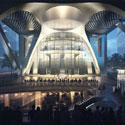
01 March 2018
A Tall Building Ethos of Integration
Brian Lee, Skidmore, Owings & Merrill
The last decade has seen great design opportunities for tall building construction around the globe. The best designs represent a new generation of skyscrapers that...
Research

01 March 2018
A Tall Building Ethos of Integration
The last decade has seen great design opportunities for tall building construction around the globe. The best designs represent a new generation of skyscrapers that...

01 September 2017
Site | Structure | Architecture – Projects that Create Change
China’s rapid growth has created great opportunities for design and construction of projects that not only transform sites but cities. This work combines local, national,...
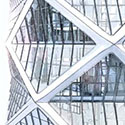
01 December 2016
There is much architectural and engineering literature which discusses the virtues of exterior bracing and diagrid systems in regards to sustainability - two systems which...

01 December 2016
The Emergence of the Diagrid - It’s All About the Node
The diagrid structural system for constructing tall buildings is a recent invention. Debuting in 2004 with the construction of the Swiss Re Tower in London,...
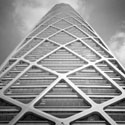
01 December 2016
The Rational Optimization and Evolution of the Structural Diagonal Aesthetic in Supertall Towers
In the design of supertall towers, engineers often find the conventional frame systems used in countless buildings in the past decades incapable of providing the...
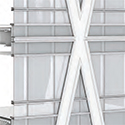
17 October 2016
Climate-Responsive Exterior Enclosure Design
In this paper, three different solutions in three different regions of China illustrate best practices for the design and execution of optimized building enclosure systems....
AirPanoPAID_EDIT.jpg)
17 October 2016
SOM and China: Evolving Skyscraper Design Amid Rapid Urban Growth
China’s rapid urban and economic growth has challenged designers, engineers, and planners to innovate and collaborate to meet the needs of a changing country. Skidmore,...
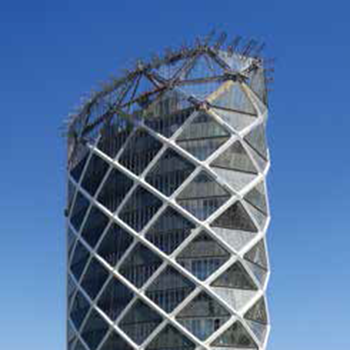
26 October 2015
Three-dimensional Exterior Bracing Systems for Tall Buildings
The use of outriggers with and without belt trusses has become an expedient of choice for harnessing the three dimensional potential of tall buildings to...
Subscribe below to receive periodic updates from CTBUH on the latest Tall Building and Urban news and CTBUH initiatives, including our monthly newsletter. Fields with a red asterisk (*) next to them are required.
View our privacy policy
































